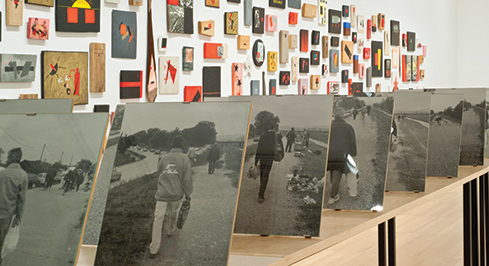 Spring 2014
Spring 2014
For Keeps Carnegie Museum of Art recently added to its collection works by 28 of the 35 artists that make up the 2013 Carnegie International. The percentage of artists represented in the nearly 75 acquisitions—a whopping 80 percent—is unusually high for the museum. Exhibition co-curator Dan Byers made this possible in large measure by holding back on purchases over the last several years in his role as the museum’s Richard Armstrong Curator of Modern and Contemporary Art. Just as Andrew Carnegie initiated the first Carnegie International to showcase the “old masters of tomorrow” and acquire many of their creations at reasonable prices, Byers and his fellow curators were doing good business. “We acknowledge that when we include artists in the exhibition, inevitably their works experience a bit of a spike,” says co-curator Tina Kukielski. “So we want to take advantage of getting the work at a more reasonable price.” How did the museum decide what to buy? Byers and Kukielski, with co-curator Daniel Baumann, opted for works that they felt not only well represented the show but would build upon the strengths of the museum’s collection. Among the acquired treasures: works by Phyllida Barlow, Sadie Benning, Wade Guyton, Zoe Strauss, and Henry Taylor.
75 Years of Teen Genius
This March, Carnegie Science Center’s annual Pittsburgh Regional Science & Engineering Fair marks 75 years of teen ingenuity. The Science Center estimates that, all told, a remarkable 50,000 students have participated in this annual academic rite of passage over seven decades—many of them the scientists, engineers, doctors, software developers, teachers, and astrophysicists of today and tomorrow. Last year, more than 1,000 students from 120 schools tackled projects as complex as designing low-cost military robots and unlocking the mysteries of slime molds (which are neither plant, animal, or fungi). Many will be back again this year to test their scientific mettle and hopefully win some of the $1 million in prizes and scholarships available, thanks to the many universities and corporations that support the Science Fair. Will there be another Bill Gates or Jonas Salk in the mix? Time will tell. In the meantime, we’ll celebrate past participants. Visit
|
Unraveling Race · Silver & Suede · The Tedious Intrigue of Art Conservation · Sun Struck · President's Note · Face Time: Nicholas Chambers · Artistic License: The Science of Sculpture · Science & Nature: Nature as Classroom · About Town: Friends of the Forest · The Big Picture
 |
Copyright © 2017 CARNEGIE Magazine. All rights reserved. |


